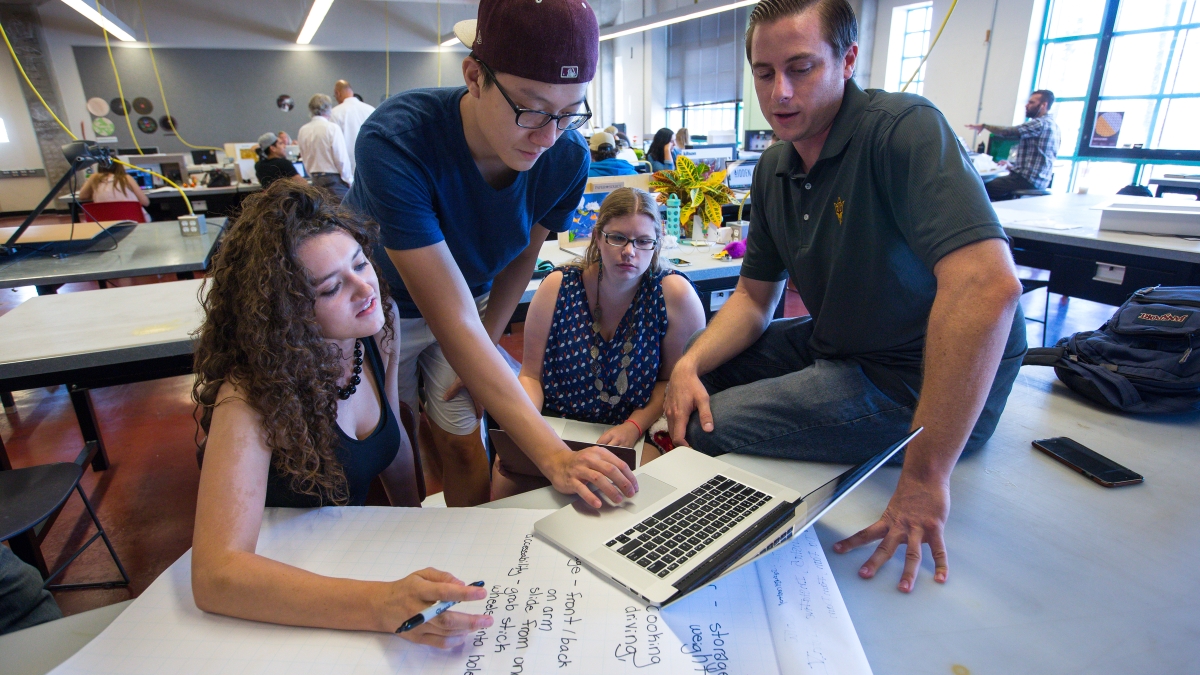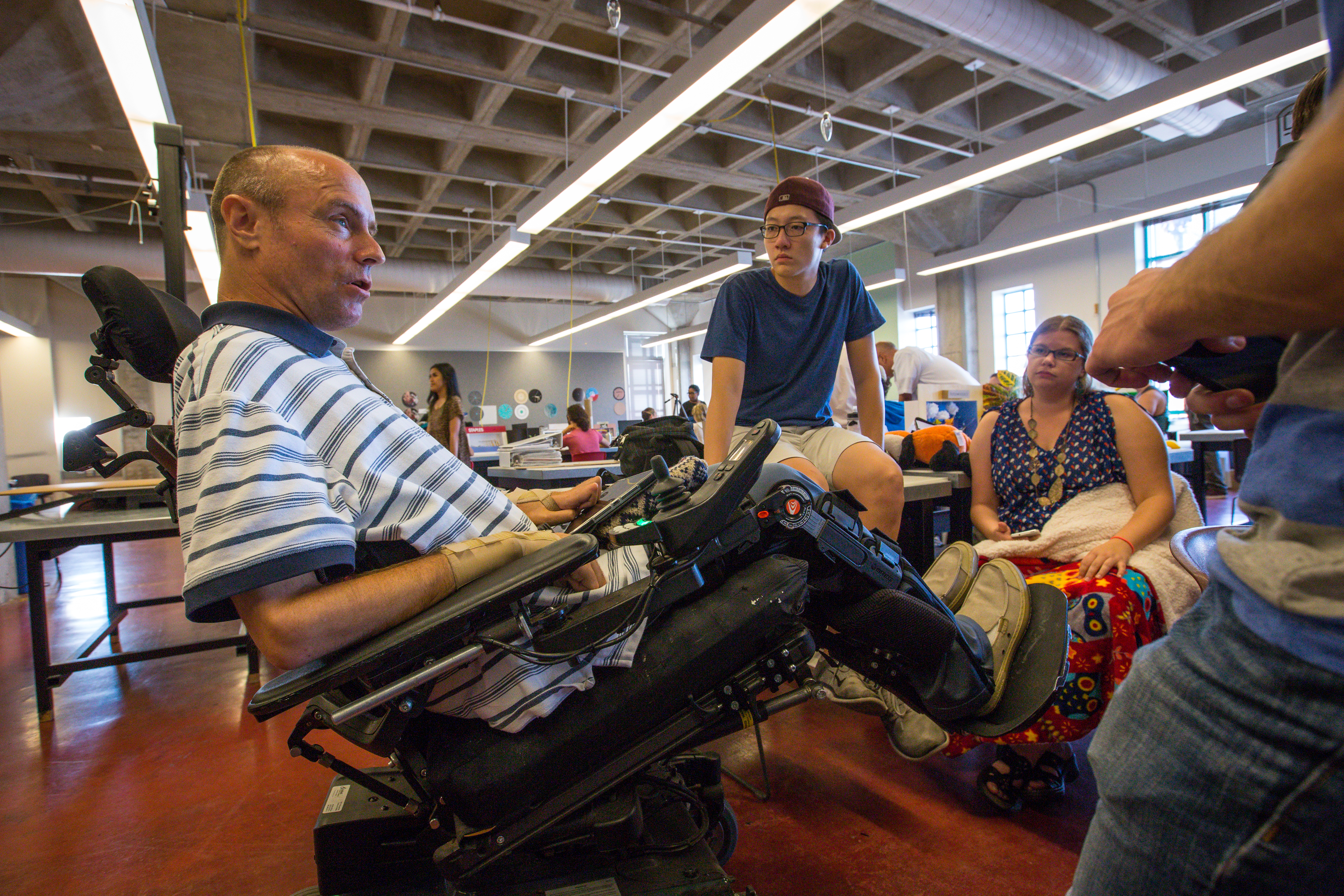Casey Smitheran’s cervical spinal cord was damaged when the automobile he was riding in blew a tire and threw the car out of control, rolling several times down into a ravine.
That was nearly 25 years ago. He has used a wheelchair ever since.
But the injuries from that accident aren’t why the Arizona State University alum has to now sit in a reclined position.
Four years ago an episode involving an underinflated wheelchair cushion triggered a five-hour muscle spasm with damaging effects on his body.
ASU alum Casey Smitheran talking to students inside InnovationSpace about how to improve upon a wheelchair design. Charlie Leight/ASU Now
“The issue I had with my inability to manage and measure a properly inflated cushion, cost me my ability to work for over a year and a half,” said Smitheran, an ASU employee in the Office of Knowledge Enterprise Development. “It was preventable.”
That’s why he is working with ASU’s Biomimicry Center and InnovationSpace, to help it devise a way to build a better wheelchair.
“Every individual with a disability has a problem, and most of them have thought of solutions,” Smitheran said. “I think we should tap into those ideas and work with students to identify and provide solutions.”
Smitheran is lending his knowledge to a BiomimicryBiomimicry is a burgeoning design movement that looks to nature to solve design and engineering problems with a nod to sustainability. team of students and faculty about people with disabilities and how to improve upon a power wheelchair. He has a litany of suggestions from storage to power, from comfort to aesthetics and the lack of interaction with today's technology, and students are taking note.
The work is part of ASU professor Prasad Boradkar’sAssociate professor in the Herberger Institute for Design and the Arts and the director of InnovationSpace. “Life in Motion: Exploring Biomimicry-based Mobility Solutions for People with Visual and Mobility Impairments” project which was awarded a $100,00 grant from Women and PhilanthropyThe group, formed in 2002 by a collection of women committed to becoming advocates and philanthropic supporters of the university, awards grants to fund the arts, entrepreneurship, biomedicine, journalistic access and engineering outreach., the philanthropic program of the ASU Foundation for a New American University.

Prasad Boradkar’s “Life in Motion: Exploring Biomimicry-based Mobility Solutions for People with Visual and Mobility Impairments” project was awarded a $100,00 grant from ASU's Women & Philanthropy.
Charlie Leight/ASU Now
The hope is to inspire future designers to come up with better products for people who have limited mobility or are visually impaired.
“Students are full of energy, creative and they come up with new and innovative ideas. They don’t worry about, ‘Can I do this?’ They give things a shot and are not afraid to fail,” Boradkar said. “Sometimes their lack of understanding how products are made is actually a positive because they try things the industry will not.”
By using InnovationSpace, an entrepreneurial joint venture among the Herberger Institute for Design and the Arts, the Ira A. Fulton Schools of Engineering, the School of Sustainability and the W. P. Carey School of Business, Boradkar and a group of approximately 30 students are hoping to create the thoughtful development of sustainable products for people with disabilities that are progressive, possible and profitable.
Students are closing out on the information-gathering phase and gearing up for the design and creation of new products. Ideas are already percolating according to Derrick Johnson, an electrical engineer major.
“Through our research we’ve discovered that people with disabilities would rather hide their impairments rather than having a product that works well,” he said. “Nobody wants that label on them, so our group is focusing on concealing disability.”
Terri Hedgpeth can relate. Blind since the age of 2, she has tried to live a “normal” life the best she can. She’s helping the students to conceive ways to help people with limited sight.
“I have great faith in these students because they are not contaminated yet with all the stereotypes of society — ‘those people are different than all the rest of us’ — they don’t come in with that notion,” said Hedgpeth, who is the director of web support for ASU’s Educational Outreach and Student Services.
One idea the team has considered is creating “smart glasses” that help describe what they’re seeing. For instance, if a person wearing the glasses is looking at a can of soup, the glasses could read what flavor it is or the list of ingredients.
Visual communication major Stephanie McNichol said sound and echo are helpful in helping the blind and visually impaired in guiding them to a certain spot, and they are also thinking of a product along those lines.
“This project allows us to be involved from the very beginning, and for a designer that’s great because usually you receive a client brief and basically it tells you what to do,” McNichol said. “But when you’re involved from the very beginning and you have an understanding of the idea you’re trying to develop — that’s when you start to see room for innovation.”
And sometimes that realization allows the students to expand their understanding of what innovation really is.
“Innovation is not about creating the next Internet or next big invention,” said Jerrod Greenberg, who is double majoring in entrepreneurship and sustainability. “It’s about making things that already exist better.”
More Science and technology
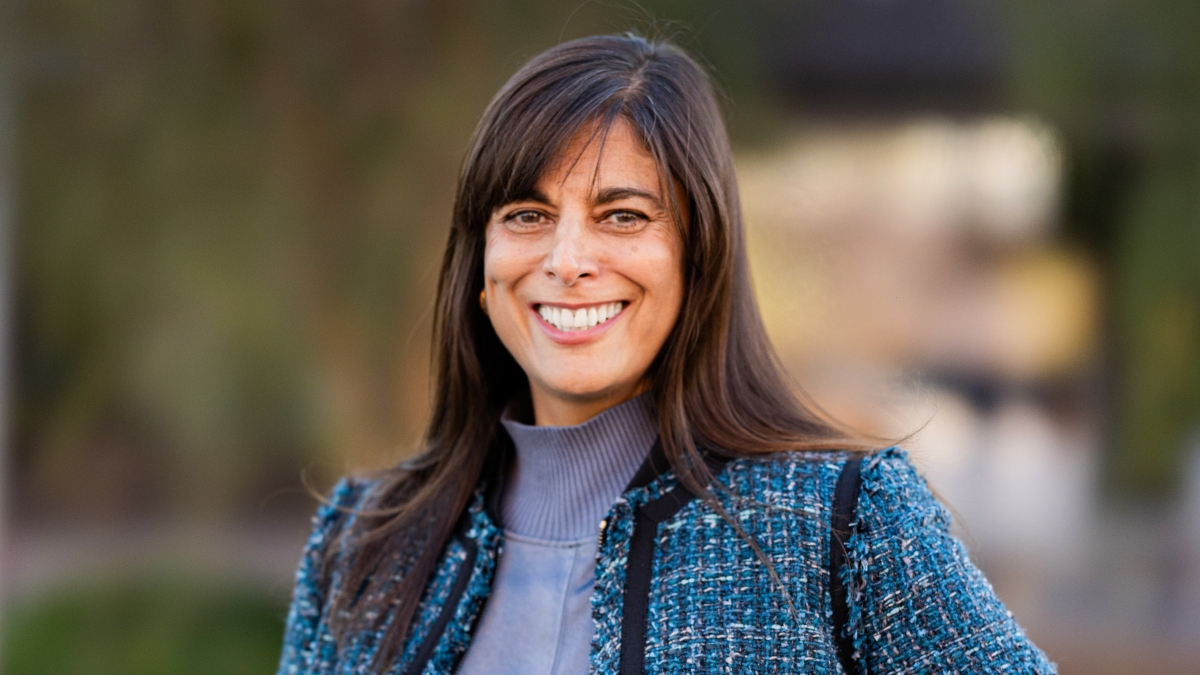
ASU planetary scientist to be inducted into the National Academy of Sciences
The National Academy of Sciences is inducting School of Earth and Space Exploration Director Meenakshi Wadhwa into the 2023 class of new members for her pioneering work in planetary sciences and…
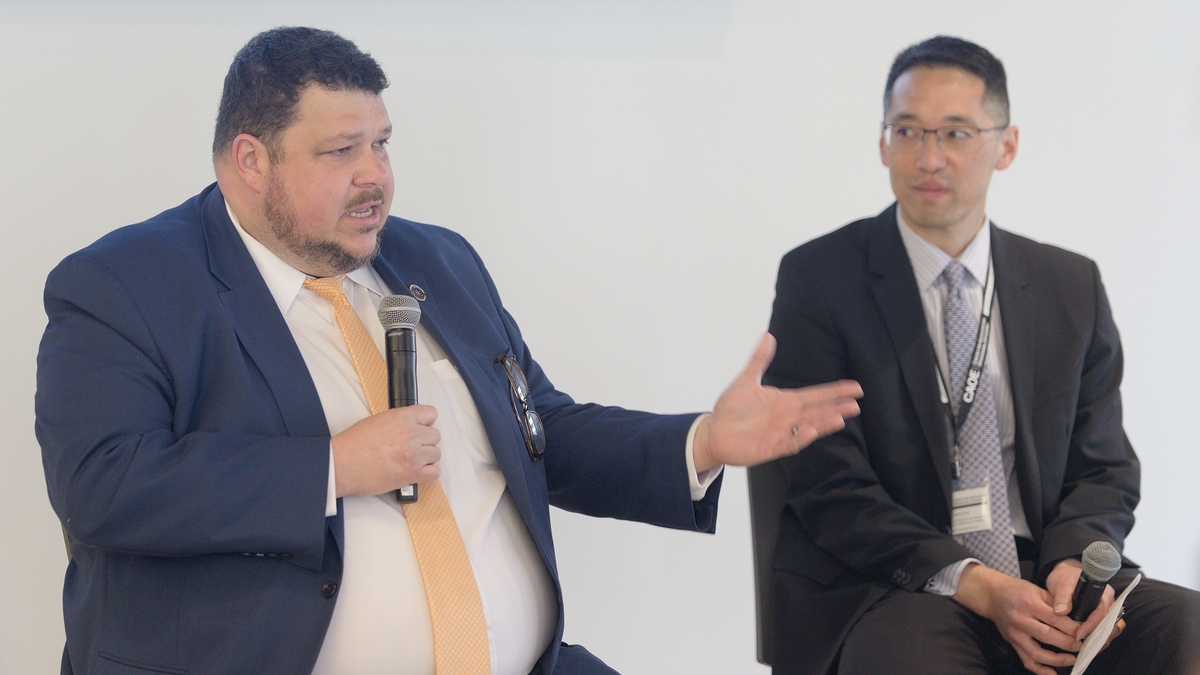
Unlocking the potential of AI for homeland security
“Can we do what we're doing now cheaper, more efficiently, more effectively?” Adam Cox, director in the Office of Strategy and Policy at the Department of Homeland Security Science and Technology…
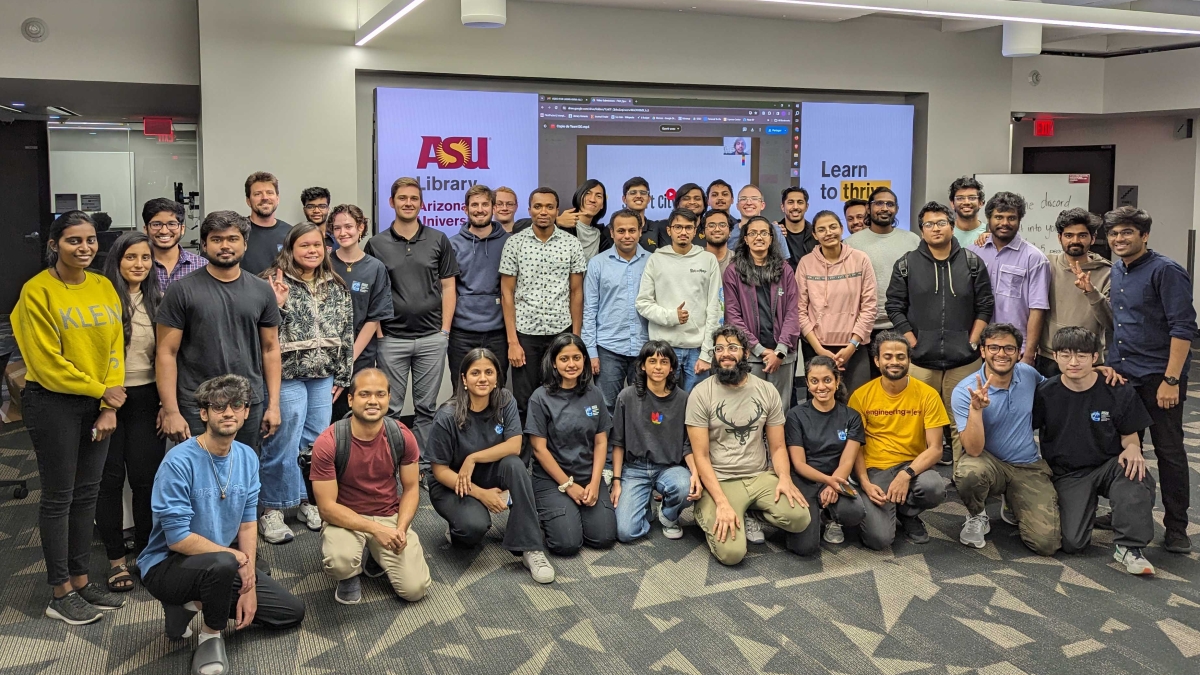
SpaceHACK highlights student solutions to environmental challenges, digital divide
By Adrianna Nine About 250 students from around the world convened online and at Arizona State University on March 22 for the ASU Interplanetary Initiative’s second annual SpaceHACK for…
